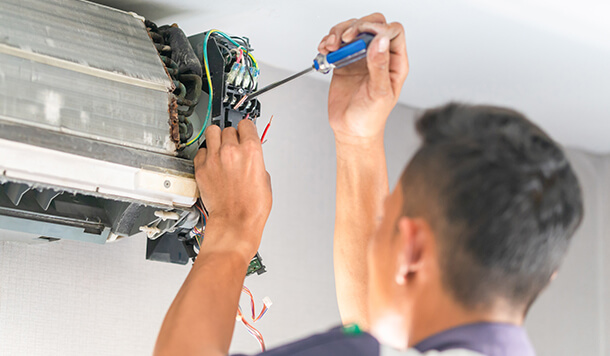The Forearm Fix: Is Radial Tunnel Syndrome Causing Your Pain?

In the digital age, we think arm and wrist pain is a sure sign of carpal tunnel syndrome. Or, if one plays pickleball, it must be tennis elbow. But if it’s your forearm that hurts and you’re having trouble with simple motions like rotating your arm or flexing your wrist, chances are it’s something else. The culprit could be radial tunnel syndrome instead.
Radial tunnel syndrome (RTS) is a pinched nerve in the arm that affects the area below the elbow, primarily the top of the forearm. Pain is the most prominent symptom. A tingling sensation isn’t usually a sign of RTS. Radial tunnel syndrome is rare compared to carpal tunnel syndrome. Each year, only three new cases of RTS occur for every 100,000 people.
Keep reading to learn about the causes and symptoms of radial tunnel syndrome and how to find relief for the painful condition.
Where Is the Radial Nerve?
The radial nerve is one of the arm’s five large nerves. It runs the length of the arm through the muscles of the bicep and forearm. The radial tunnel is the space that the nerve passes through between the forearm muscles. When your arm hangs at your side, the radial nerve is on the top outer edge of the forearm. The radial nerve controls the muscles that straighten the elbow, wrist, and fingers.
What Is Radial Tunnel Syndrome?
Radial tunnel syndrome is the compression or entrapment of the radial nerve. The tunnel becomes smaller and pinches the nerve, causing a deep, aching pain in the forearm and possibly muscle weakness too.
What Causes Radial Tunnel Syndrome?
Radial tunnel syndrome occurs when the radial nerve is pinched or entrapped as a result of inflammation or swelling of the muscles around it. Repetitive motions that amount to chronic overuse are the most common cause.
Common repetitive motions include:
- Sports-related: Forceful elbow movements common to baseball, tennis, and weightlifting
- Non-sports-related: Gripping, pinching, flexing, or twisting of the wrist; heavy lifting; rotating arm; blunt injury to the arm

These activities make you susceptible to radial tunnel syndrome:
- Construction work
- Sports
- Playing a musical instrument
- Heavy computer use
What Does Radial Tunnel Syndrome Feel Like?
The most common symptom of radial tunnel syndrome is deep pain in the forearm. Rotating the arm usually increases the pain. Other symptoms may include hand and wrist weakness and difficulty extending the wrist, with a related condition called PIN syndrome. The pain may feel worse while trying to sleep. Notably, symptoms don’t include elbow pain or the sensation of tingling pins and needles.
Radial tunnel syndrome doesn’t always exist in isolation. It may occur along with a forearm muscle injury or chronic overuse stress, like tennis elbow. Those problems can exacerbate or lead to radial tunnel syndrome. However, repetitive motions can cause inflammation that pinches that radial nerve without an associated injury.
How Is Radial Tunnel Syndrome Diagnosed?
There is no single test to detect radial tunnel syndrome. Hand and arm specialists reliably diagnose radial tunnel syndrome with physical exams while considering a patient’s medical history and activities. Physical exams test range of motion and pain when pressing on the forearm, elbow, wrist, and fingers.
Physicians may want a deeper look at the nerve area. Options include an EMG to assess nerve function, a nerve conduction study to measure the electrical activity of the nerve, and an MRI or ultrasound image to rule out other conditions.

What Other Conditions Look Like Radial Tunnel Syndrome?
If you are experiencing symptoms of radial tunnel syndrome, it’s important to consult a specialist with expertise in upper extremity conditions. Other conditions mimic the same signs but require different treatments. An accurate diagnosis is essential for achieving the fastest, safest, longest-lasting relief possible.
Here are upper extremity conditions similar to radial tunnel syndrome and how to tell them apart.
- Tennis elbow (also known as lateral epicondylitis) is also achy and painful, but it is located on the outside of the elbow rather than in the forearm muscle. It gets worse when lifting or gripping instead of straightening.
- Carpal tunnel syndrome: Pain can extend up the arm to the elbow, but the primary symptoms don’t overlap with radial tunnel syndrome. Those are numbness, tingling, or burning in the fingers or palm, and/or difficulty with tiny finger movements.
- Radial nerve palsy (also known as Saturday night or honeymoon palsy): This condition is also a pinched radial nerve. It’s caused by sleeping on the arm and waking up with the feeling of pins and needles along the back of your arm, forearm, or hand that doesn’t go away. A droopy wrist is another symptom of radial nerve palsy.
- PIN syndrome: The PIN (posterior interosseous nerve) is a branch of the radial nerve that controls movement. Those with PIN syndrome complain of trouble moving their wrist or fingers more than pain.
How to Fix Radial Tunnel Syndrome
It’s realistic to live pain-free after treating radial tunnel syndrome. An experienced orthopedic specialist can deliver excellent results in most cases. Typically, only the most severe cases require surgery.
Nonsurgical Treatment for Radial Tunnel Syndrome
Conservative approaches for radial tunnel syndrome treatment have a high success rate. They include:
- Rest and stopping the activity that causes the inflammation
- Occupational therapy to learn movement adjustments that alleviate inflammation and exercises that improve range of motion and strengthen muscles and joints
- Anti-inflammatory medications, such as aspirin, ibuprofen, and naproxen, to reduce swelling that compresses the nerve
- A brace or splint that velcros around the wrist to limit extension
- Corticosteroid or steroid injections to reduce inflammation long-term, sometimes accompanied by a numbing anesthetic for instant relief
Surgical Treatment for Radial Tunnel Syndrome
Surgery for radial tunnel syndrome isn’t common. It’s a last resort in these extreme cases:
- The radial tunnel syndrome pain doesn’t respond to nonsurgical treatment after a few months.
- A specialist suspects that there may be a tumor or cyst in the radial tunnel, putting pressure on the nerve.
If the pain doesn’t respond to conservative treatment, an orthopedic surgeon may perform an outpatient procedure called radial tunnel release to alleviate pressure on the nerve.
Catching radial tunnel syndrome early makes a big difference in recovery time. First, nonsurgical treatments are more likely to work if you avoid maximum damage. And if surgery is necessary, mild cases should require up to eight weeks of recovery compared to up to eight months for advanced cases.
When Is It Time to See a Specialist?
Radial tunnel syndrome is a painful condition that is usually caused by an aggravating repetitive motion. If it’s tolerable, you may try treating it yourself by ceasing the activity and taking over-the-counter anti-inflammatory medication.
If the pain doesn’t improve within a week or two, or you don’t know what activity might be causing the pain, you should see a specialist as soon as possible before the damage becomes worse. An early diagnosis and targeted treatment can solve radial tunnel syndrome pain without surgery.
Book an Appointment With IHTSC
If you are in pain or losing function, schedule a consultation at the Indiana Hand to Shoulder Center to regain quality of life. Our forearm pain specialists deliver outstanding care and have a reputation for industry-leading results. With a comprehensive staff of physicians, surgeons, and occupational therapists, IHTSC offers the most options for your treatment plan.
Call (317) 875-9105 to make an appointment or schedule online.
You Might Also Like:
Disclaimer: The materials on this website have been prepared for informational purposes only and do not constitute advice. You should not act or rely upon any medical information on this website without a physician’s advice. The information contained within this website is not intended to serve as a substitution for a thorough examination from a qualified healthcare provider. The display of this information is not intended to create a health care provider-patient relationship between the Indiana Hand to Shoulder Center and you.



